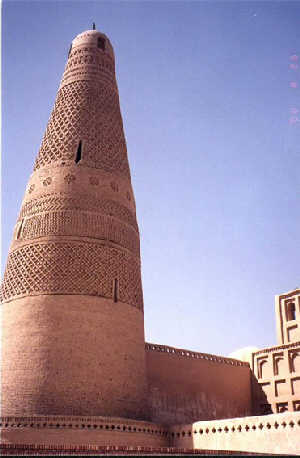Turpan
 A "glistening pearl" along the Silk Road, Turpan is dubbed "the lowest, sweetest, hottest, and driest" place in China, which vividly portrays its unique natural features. Endowed with very rich natural resources, the total Turpan Prefecture area spans 6,728 square kilometers, which makes up about 4.2 percent of Northwest China's Xinjiang Uygur Autonomous Region. Numerous grapevines, orchards, and karez (underground water channels), as well as ancient cities, minarets, graveyards, thousand-Buddha grottoes, and ancient Islamic buildings abound throughout the region.
A "glistening pearl" along the Silk Road, Turpan is dubbed "the lowest, sweetest, hottest, and driest" place in China, which vividly portrays its unique natural features. Endowed with very rich natural resources, the total Turpan Prefecture area spans 6,728 square kilometers, which makes up about 4.2 percent of Northwest China's Xinjiang Uygur Autonomous Region. Numerous grapevines, orchards, and karez (underground water channels), as well as ancient cities, minarets, graveyards, thousand-Buddha grottoes, and ancient Islamic buildings abound throughout the region.
Turpan, which means "rich and endowed place" in Turkish, is situated in the middle of Xijiang. Known as "Gaochang," "Xizhou," or "Huozhou" in historic records, Turpan became the political, cultural, and economic center in western China early in the Han Dynasty (206BC-220AD) more than 2,000 years ago. As a famous town of military importance, Turpan was built as the capital of the ancient Cheshi Kingdom.
It was also the one of earliest places to open to the outside world. From since the Tang Dynasty (618-907), external exchanges with other countries have taken place. In history, businessmen, monks, and ministers from China, India, Persia (today's Iran), and the Mediterranean gathered and interacted with each other in Turpan, leaving behind numerous stories and legends.
Turpan's distinctive features prevent it from being confused with any other region. Local people have pinpointed the region's four "bests" to present its unique natural conditions, which epitomize Turpan's geological and climatic characteristics.






